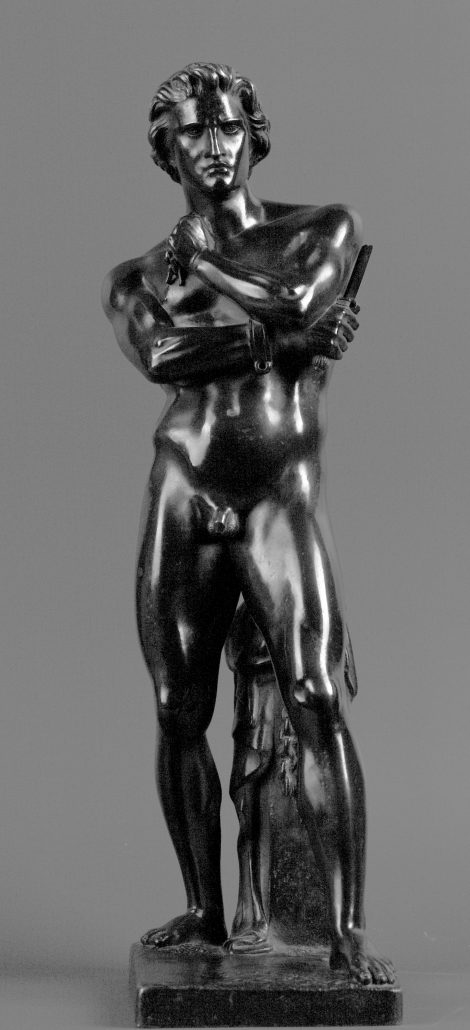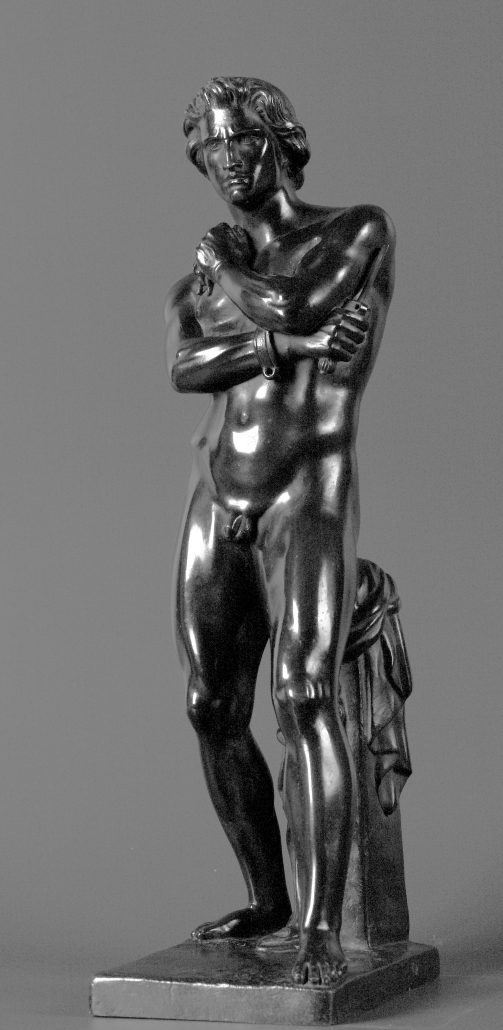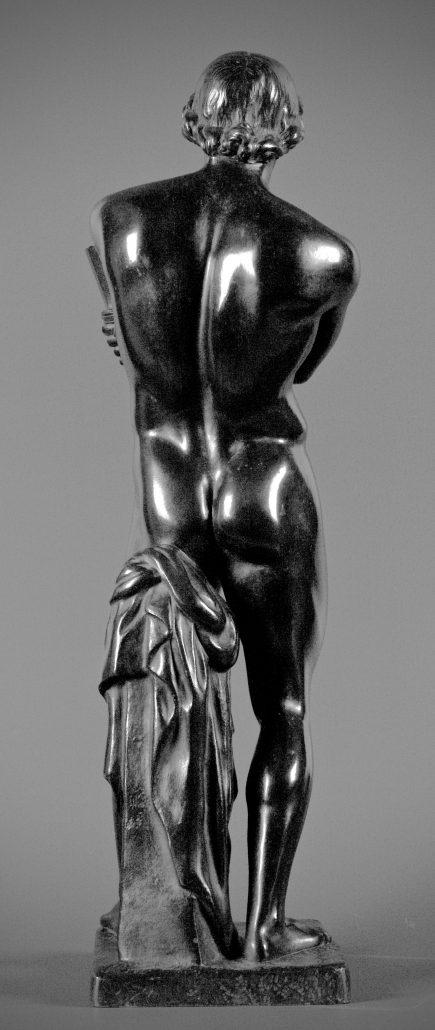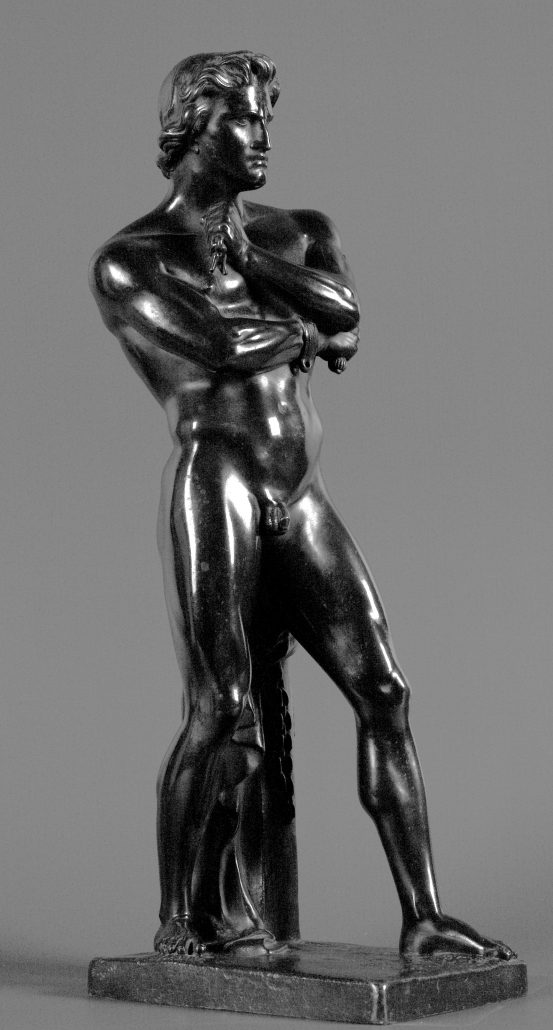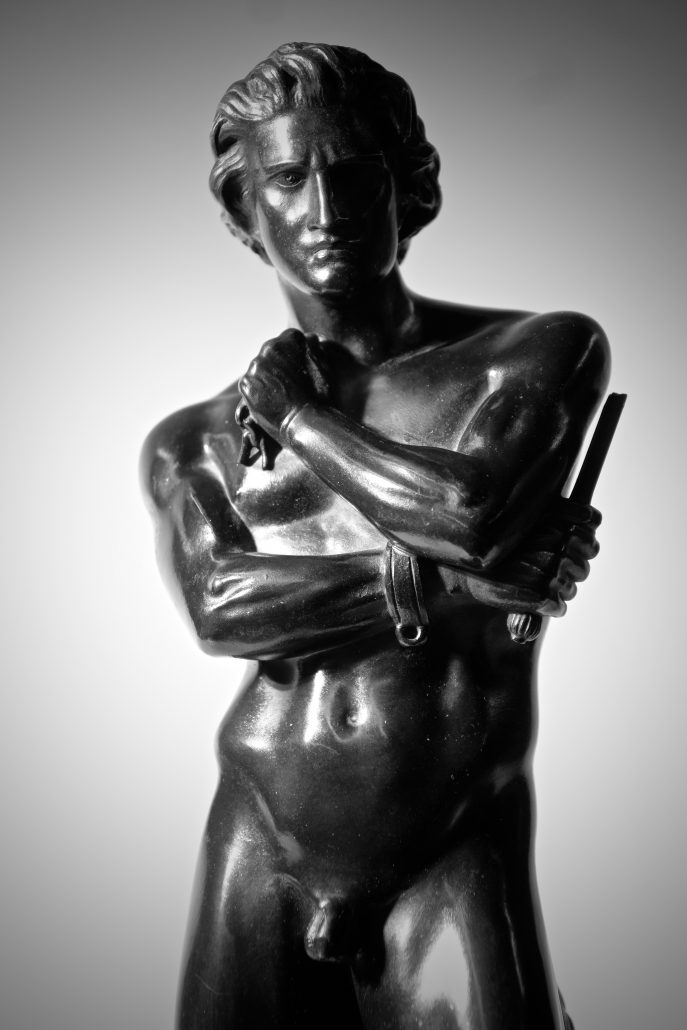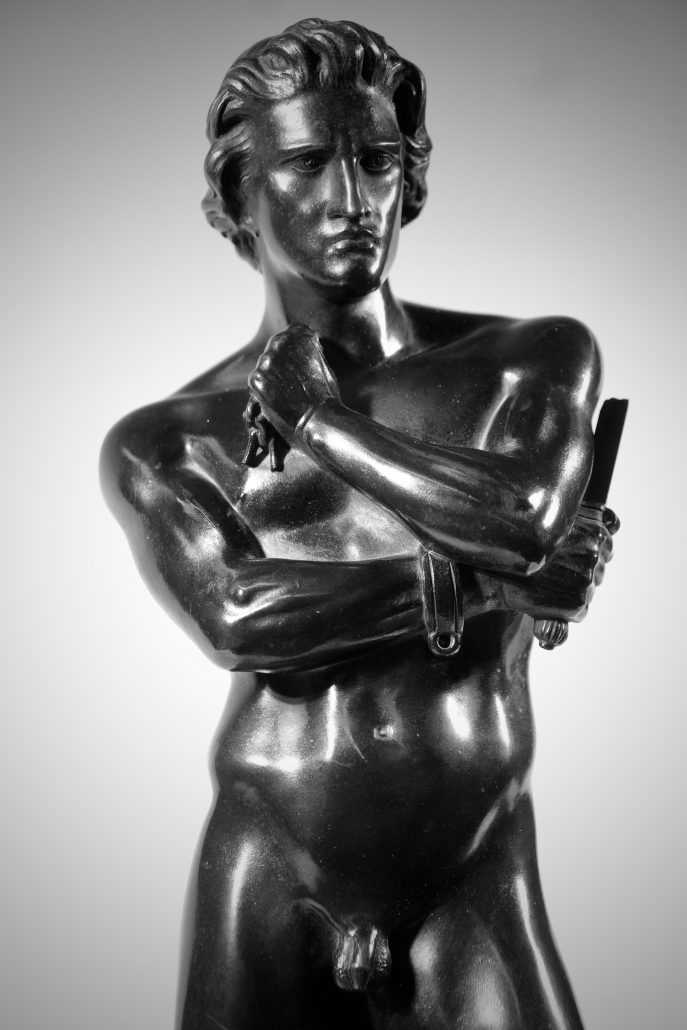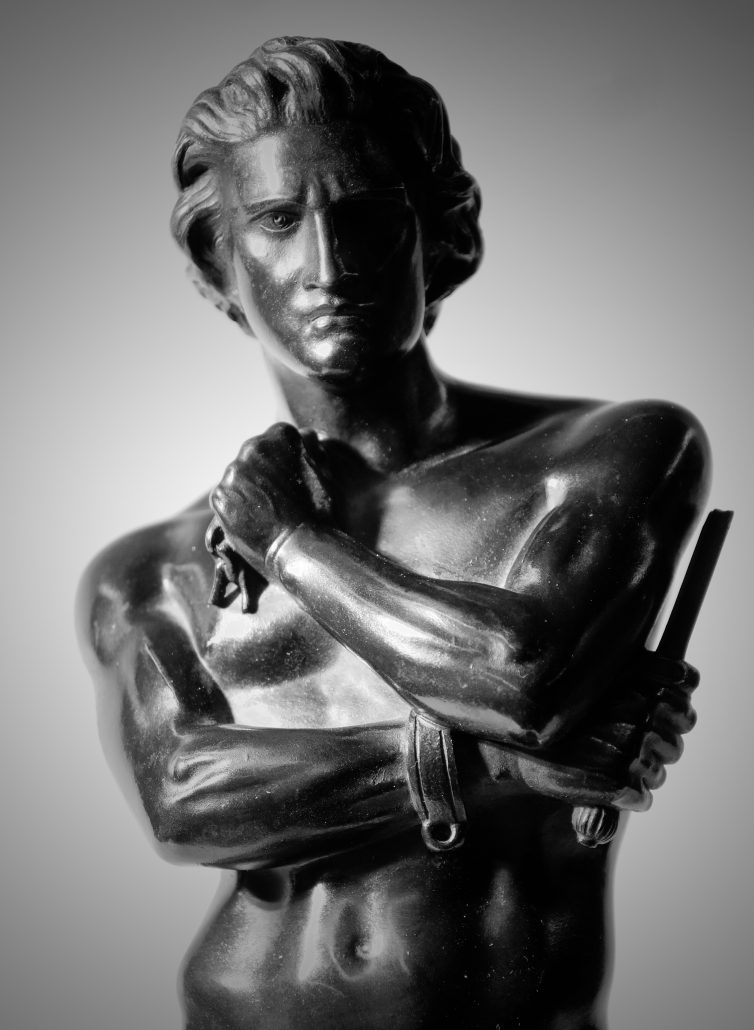Denis Foyatier
1793 – 1863
French School
Spartacus, 1827
Sand cast bronze
Height:40cm Base:11x16cm
Foyatier was born into a family of modest means (his father was a weaver and later a farmer at Bezin, a hamlet near Bussières, Loire). While enrolled in a design course in Lyons, he began producing religious figures. In 1817, he entered the Ecole Nationale des Beaux Arts in Paris. In 1819 he exhibited his first pieces and, aged 26, was awarded a scholarship for the French Academy in Rome at the Villa Médicis. He created the mold for his model of Spartacus there, and it is widely considered to be his masterpiece. A Royal Command of 1828 for a production of it in marble made him famous. Some of Foyatier’s works have been lost; several were melted down during the Second World War.
The larger-than-life version of Spartacus (1827 and later, 1830) is currently conserved by the Musée du Louvre. It was intended to be part of an ensemble of eight statues for the Allée des grands hommes (The Avenue of Great Men) in the Jardin des Tuileries. The statue represents Spartacus breaking his chains. The marble was moved to the Louvre in 1877. Fanny Lewald intimated that Foyatier’s Spartacus was modeled after the pianist and composer Franz Liszt. (Zwölf Bilder mach den Leben, p. 337).
Foyatier presented his work in plaster at the Salon of 1827. The catalogue describes it as follows: « Spartacus, Thracian prince, having become a Roman slave, was condemned to undertake the vile profession of gladiator. Escaping from prison, he raised an army of dissidents and visited terror to the very walls of Rome. The prince is represented at the moment he has broken his chains. »
The story of Spartacus is recounted by Plutarch in Lives, where he establishes parallels between famous Greeks and Romans. The vigor of its expression guaranteed the sculpture’s immediate success. For some, it regenerated Classical sculpture, since it adhered to strict academic canons:
Spartacus is nude, an obligatory tradition in the Romantic Period when representing heroes from antiquity. His imposing stature corresponds to the exigencies of The Great Style, which establishes a correlation between the dimensions of a statue and the impact it makes on the viewer. Foyatier’s work is undoubtedly inspired by Canova, particularly the latter’s Demoxanos (Vatican Museum). It mirrors its pose and possesses the same, intense, mental and physical concentration. On the other hand, the expressive character of the protagonist, whose attitude is one of repressed fury, was a characteristic associated with Romantic subject matter.
The enormous success of the Spartacus was not only due to its excellence but to its theme. Spartacus is rare as a subject in sculpture. One saw in it a protest of the regime of Charles X, although this idea was far from the artist’s original intentions. Foyatier executed the sculpture at the Villa Medicis in Rome, where he entertained peaceful and positive official relationships from 1822 to 1825. When he presented his sculpture at the Salon of 1827, he received a commission for a marble by royal decree. However, by the time the sculpture was completed, the Trois Glorieuses – the name given to the revolution of 1830 – had brought down the regime of Charles X. Foyatier seized the opportunity and modified the inscription on his Spartacus, changing the date of 1827 to read July 29, 1830. In so doing, he commemorated the last day of a popular uprising and drew parallels between recent political upheavals and the Thracian rebel’s remarkable insurgency against the Roman Empire.
With an astute and timely sleight-of-hand, the sculptor not only updated the significance of his historically based work, but transformed it into a veritable Republican icon.
Excerpted from Jean-Roger Soubiran’s book in preparation, “Le nu masculin dans la collection Martin du Louvre”. Translation: John-Paul Bogart © Copyright 2017. All rights reserved. Jean-Roger Soubiran is Honorary Professor of Contemporary Art History at the University of Poitiers. Former curator of the Museums of Fine Arts of Cannes and Toulon.

